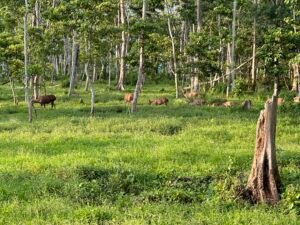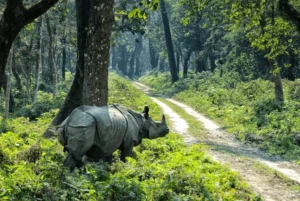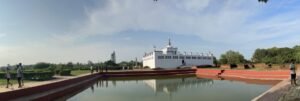Terai Region
Terai Region – Where Wild Jungles Meet Rich Culture in Nepal


Why Visit the Terai Region?
The Terai isn’t just flatland—it’s the ecological and cultural heartland of southern Nepal. Home to over half of the country’s population, it blends natural abundance with deep-rooted traditions. From spotting one-horned rhinos in UNESCO-listed national parks to walking in the footsteps of Buddha in Lumbini, the Terai delivers unforgettable moments for every kind of traveler.
Top Destinations in Nepal’s Terai Region
Chitwan National Park – Nepal’s Wildlife Crown Jewel
A UNESCO World Heritage Site since 1984, Chitwan National Park is the most accessible and popular wildlife destination in Nepal. Spanning over 950 sq km, it shelters endangered species like the Bengal tiger, one-horned rhinoceros, gharial crocodile, and over 500 bird species.
Visitors can enjoy jungle safaris on elephant back, jeep tours, canoe rides on the Rapti River, and guided nature walks led by expert naturalists.


Bardia National Park – Untamed Wilderness
For travelers seeking solitude and raw nature, Bardia National Park in western Terai is the perfect escape. Less crowded than Chitwan, Bardia offers pristine sal forests, grasslands, and riverine ecosystems teeming with wildlife—including elusive tigers and wild elephants.
Activities include jeep safaris, elephant-back safaris, Tharu village homestays, and river dolphin spotting on the Karnali River.
Lumbini – Birthplace of Lord Buddha
A spiritual oasis and UNESCO World Heritage Site, Lumbini attracts pilgrims and peace-seekers from around the globe. This sacred garden complex marks where Siddhartha Gautama—later known as the Buddha—was born in 623 BCE.
Explore monasteries built by countries like China, Japan, Thailand, and Germany, meditate under the sacred Bodhi tree, and visit the Maya Devi Temple at the exact birthplace.


Experience Tharu Culture – The Soul of the Terai
The indigenous Tharu people have lived in harmony with the Terai’s forests for centuries. Their vibrant culture—expressed through music, dance (like the stick dance), traditional mud-house architecture, and organic cuisine—offers an authentic window into Nepal’s rural life.
Many eco-lodges and community homestays near Chitwan and Bardia organize cultural programs where visitors can learn Tharu cooking, participate in folk dances, and hear ancestral stories passed down through generations.
Best Time to Visit the Terai Region
The ideal time to explore the Terai is from October to March, when temperatures are mild (15–30°C) and wildlife is more visible near water sources. Avoid the monsoon season (June–September), as heavy rains cause flooding and limit safari access.
Winter months (December–February) are especially magical—cool mornings, clear skies, and excellent birdwatching opportunities.
How to Reach the Terai
- By Air: Regular flights from Kathmandu to Bharatpur (for Chitwan) and Nepalgunj (for Bardia/Lumbini).
- By Road: Well-connected highways from Kathmandu (5–8 hours) and Pokhara (3–5 hours). Comfortable tourist buses and private vehicles available.
- From India: Several border crossings like Sunauli (near Lumbini) and Raxaul offer easy access for international travelers.
Plan Your Terai Adventure with Travelling Nepal
Whether you’re dreaming of tracking tigers in Bardia, meditating in Lumbini, or dancing with the Tharu under starlit skies, Travelling Nepal helps you craft seamless, sustainable, and soulful journeys across the Terai.
Explore our curated itineraries:
Related Regions to Explore
After experiencing the Terai, continue your journey through Nepal’s diverse landscapes:
- Hilly Region – Scenic valleys, historic towns, and panoramic mountain views.
- Mountain Region – Home to Everest, Annapurna, and high-altitude trekking trails.